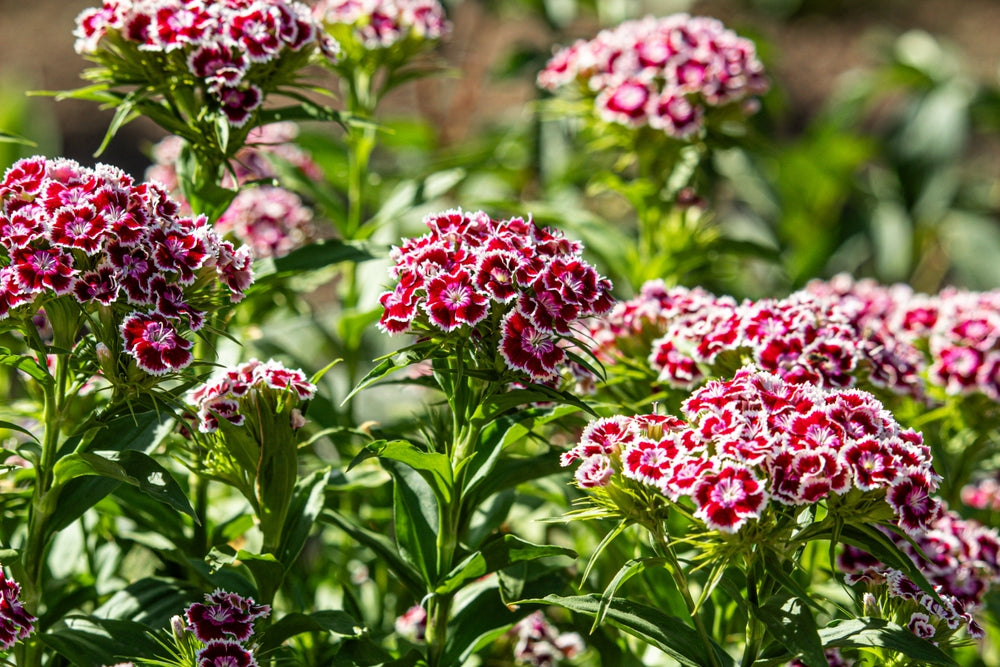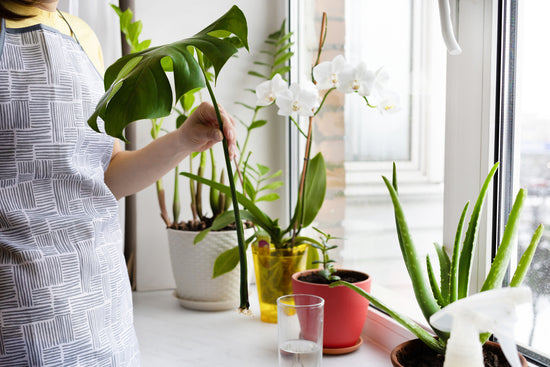The Dianthus barbatus, more commonly known as Sweet William plant, has many names that mean many different things. It is a stunning flowering plant that has gained its popularity worldwide... with great reason!

Its striking purple, pink, red, and white variegated Sweet William flowers are unforgettable once witnessed in full bloom., and with it sweet-spicy scent, this plant practically makes for the perfect ornamental plant.
Curious about its origins and wondering how you can grow it in your own home gardens? Read on to know more!
• Origins and Significance of Dianthus Barbatus
The Dianthus Barbatus belongs to the Dianthus genus. Tracing its origins and history back to the mountainous regions of Southern Europe, the Sweet William plant is a European masterpiece.
The plant's significance lies in its rich cultural history, where it symbolizes valor, finesse, and sweet simplicity.
• Wondering Where it Got its Name?
Called Sweet William most commonly, the Dianthus Barbatus also has other names that signify all its different meanings.
However, the botanical name, Dianthus barbatus, was derived from Greek words. "Dianthus" combines "dios," which means divine, and "anthos," meaning flower. Many say that this name aptly describes its stunning charm and unforgettable 'divine' beauty.
There are many stories about how it got its other names and even though none of them are verified, here are a few of them!
The name "Sweet William" in particular is often said to honor the 18th century Prince William, Duke of Cumberland. He is revered by many because of his role in containing an important uprising in 1746, but while he is celebrated by a few, he was also hated by many.
For this reason, it is also claimed that the Scots sometimes call the flower "Stinking Billy", which is how it got its other name - Stinking Willie/Billy. However, this story stands to be proven as entirely untrue, so maybe its just good as a bedtime tale? Definitely.
• Dianthus Barbatus Benefits
Beyond its captivating aesthetic appeal, the Sweet William offers several benefits.
1. Sweet William Facilitates Pollination:
The fragrant Sweet William flowers attract many pollinators, contributing to a healthier garden ecosystem.
2. Sweet William Flower Versatility:
Sweet William flowers are also regularly used for cut arrangements, thus adding a burst of color and a sweet scent to indoor spaces. The sheer versatility of the Dianthus barbatus makes it a perfect choice for borders, beds, and containers.
3. Medicinal Benefits of Sweet William:
Some herbalists make use of the Sweet William in traditional medicine. It is said to have the ability to treat respiratory conditions, improve digestion, and reduce inflammation.
4. Sweet William Flower has Self-Seeding Abilities:
The Dianthus barbatus has the ability to self-seed and create baby plants if left alone. The plant is perennial and can continue blooming, and reproducing for years if taken care of well because of this reason.
Buy Sweet William Seeds online
So, how do you care for and grow Sweet Williams, enabling them to thrive and bloom to their fullest?
• Sweet William Flower Season in India
In India, the Sweet William flower grows in the winter season. So, seeds are sown in the period of September to October for winter flowering. But if you're looking for early flowering Sweet Williams, you can also plant the seeds in June-September.
The Sweet William is a perennial flower which means that if you plant the Sweet William seeds one year, they will continue blooming and blossoming every year when their season comes!
• Sweet William Care Tips
a. Dianthus Barbatus Soil:
Sweet William thrives in well-draining soil with a slightly alkaline to neutral pH. When planting, you should ensure that the soil is enriched with organic matter for optimal growth.
b. Giving your Sweet William Adequate Light:
Provide your Sweet William with full sun to partial shade. Give it at least 6 hours of sunlight daily to ensure the growth of robust and vibrant blooms.
c. Watering Sweet William:
Maintain moderate moisture levels, allowing the soil to dry slightly between waterings. Make sure to avoid overwatering, as the Sweet William plant is susceptible to root rot in waterlogged conditions.
Buy Watering Equipment online
d. Fertilization:
Feed your Sweet William plant with a balanced, all-purpose fertilizer during the growing season to encourage a healthy foliage and vibrant flowering.
e. Pruning Care of Sweet William Flowers:
Deadhead spent flowers regularly to prolong the flowering period. This not only enhances the plant's appearance but also ensures continuous blooming.
f. Growing Sweet William in Pots:
The Dianthus barbatus has great potential to do very well in container gardening. If you have mastered your Sweet William care routine, you can easily grow them in pots and planters, with the right kind of potting mix and well-drained pots.
Buy Pots and Planters online
Dianthus barbatus - Sweet William - is a captivating and versatile flowering, ornamental plant with a rich history and cultural significance. With the right care and attention, this stunning perennial beauty can thrive in various settings, while adding an unforgettable charm and fragrance to your garden or living space.














